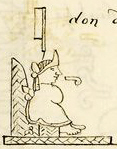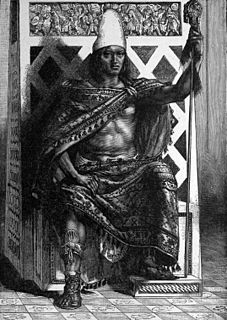 W
WAztec codices are books written by pre-Columbian and colonial-era Nahuas in pictorial and/or alphabetic form.
 W
WThe Codex Mendoza is an Aztec codex, believed to have been created around the year 1541. It contains a history of both the Aztec rulers and their conquests as well as a description of the daily life of pre-conquest Aztec society. The codex is written in the Nahuatl language utilizing traditional Aztec pictograms with a translation and explanation of the text provided in Spanish. It is named after Don Antonio de Mendoza, the viceroy of New Spain, and a leading patron of native artists.
 W
WThe Codex Xolotl is a postconquest cartographic Aztec codex, thought to have originated before 1542. It is annotated in Nahuatl and details the preconquest history of the Valley of Mexico, and Texcoco in particular, from the arrival of the Chichimeca under the king Xolotl in the year 5 Flint (1224) to the Tepanec War in 1427.
 W
WCuitláhuac or Cuitláhuac was the 10th tlatoani (ruler) of the Aztec city of Tenochtitlan for 80 days during the year Two Flint (1520). He is credited with leading the Mexica resistance to the Spanish invasion, following the death of his kinsman Moctezuma II.
 W
WThe Florentine Codex is a 16th-century ethnographic research study in Mesoamerica by the Spanish Franciscan friar Bernardino de Sahagún. Sahagún originally titled it: La Historia Universal de las Cosas de Nueva España. After a translation mistake, it was given the name Historia general de las Cosas de Nueva España. The best-preserved manuscript is commonly referred to as the Florentine Codex, as the codex is held in the Laurentian Library of Florence, Italy.
 W
WDon Diego de Alvarado Huanitzin was a 16th-century Nahua noble. A grandson of Axayacatl, Nephew of tlatoani Moctezuma II. He was initially the tlatoani (ruler) of Ecatepec before becoming tlatoani of Tenochtitlan, as well as its first governor under the colonial Spanish system of government.
 W
WThe Mapa Quinatzin is a 16th-century Nahua pictorial document, consisting of three sheets of amatl paper that depict the history of Acolhuacan.
 W
WMoctezuma Xocoyotzin modern Nahuatl pronunciation (help·info)),, variant spellings include Motecuhzomatzin, Montezuma, Moteuczoma, Motecuhzoma, Motēuczōmah, Muteczuma, and referred to retroactively in European sources as Moctezuma II, was the ninth tlatoani or ruler of the Aztec Empire, reigning from 1502 to 1520. The first contact between the indigenous civilizations of Mesoamerica and Europeans took place during his reign, and he was killed during the initial stages of the Spanish conquest of the Aztec Empire, when conquistador Hernán Cortés and his men fought to take over the Aztec capital Tenochtitlán.